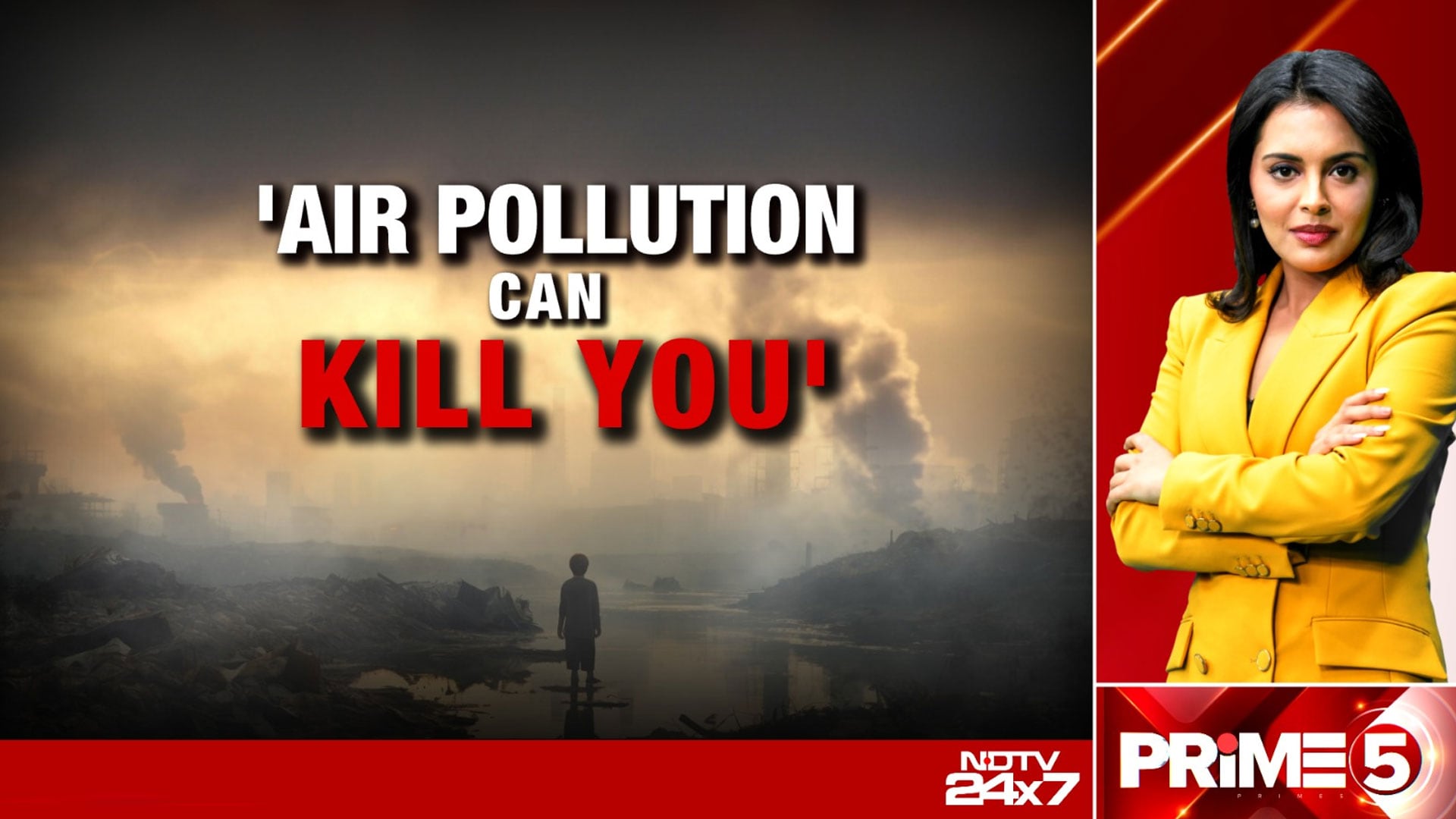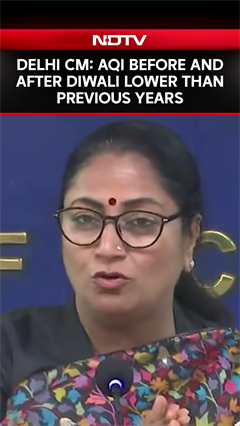- Home/
- 18 Of 20 Cities With Most Severe Increase In PM2.5 Pollution Are In India
18 Of 20 Cities With Most Severe Increase In PM2.5 Pollution Are In India

India is home to 18 of the 20 cities with the most severe increase in fine particle pollutants (PM2.5) from 2010 to 2019, according to a comprehensive and detailed analysis of air pollution and global health effects for over 7,000 cities released on Wednesday.
The report published by the US-based research organisation Health Effects Institute (HEI) also shows that Delhi has the highest average level of fine PM 2.5 among the world's most populated cities.
The analysis used data from 2010 to 2019 and focussed on two of the most harmful pollutants: fine particulate matter (PM2.5) and nitrogen dioxide (NO2).
The report 'Air Quality and Health in Cities' combined ground-based air quality data with satellites and models to produce air quality estimates for cities around the world.
The authors noted that in 2019, 1.7 million deaths linked to PM2.5 exposure occurred in the 7,239 cities included in the analysis, with cities in Asia, Africa, and Eastern and Central Europe seeing the greatest health impacts.
They zoomed in to the most populous cities in each region i.e. a subset of 103 cities across 21 regions.
Among the most populous cities in each region, Delhi and Kolkata featured in the top 10 with the highest PM2.5-related disease burden in 2019.
In the 20 cities with highest PM2.5 exposures, residents in cities from India, Nigeria, Peru, and Bangladesh are exposed to PM2.5 levels that are several-fold higher than the global averages, the report said.
Only four of these cities, and none in India, met the WHO annual PM2.5 Air Quality Guideline of 5 microgrammes per cubic metre in 2019, it said.
India and Indonesia have seen the most severe increase in PM2.5 pollution, whereas China has seen the greatest improvements.
"Of 7,239 cities, India is home to 18 of the 20 cities with the most severe increase in PM2.5 pollution from 2010 to 2019. The other two cities are in Indonesia," the authors of the study noted.
"Of the 50 cities with the most severe increase in PM2.5, 41 are in India and 9 are in Indonesia. On the other hand, of the 20 cities with the greatest decrease in PM2.5 pollution from 2010 to 2019, all are located in China," they said.
The report found that while exposures to PM2.5 pollution tend to be higher in cities located in low- and middle-income countries, exposure to NO2, is high across cities in high-income as well as low- and middle-income countries.
"Since most cities around the world have no ground-based air quality monitoring in place, estimates of particulate and gas pollution levels can be used to plan air quality management approaches that ensure the air is clean and safe to breathe," said Susan Anenberg of George Washington University, one of the project collaborators.
The report also highlights data gaps in low- and middle-income nations, a key aspect to understanding and addressing the health effects of air pollution.
According to the WHO's Air Quality Database, only 117 nations currently have ground-level monitoring systems to track PM2.5, and only 74 nations are monitoring NO2 levels.
Breathing even low levels of pollution over time can produce a myriad of health effects, including reduced life expectancy, missed school and work, chronic illnesses, and even death, putting enormous strains on communities and economies around the world, the report said.
Worldwide, air pollution is responsible for one in nine deaths, accounting for 6.7 million deaths in 2019, with particularly strong impacts on the young, the elderly, and those with chronic respiratory and heart diseases, it said.
(Except for the headline, this story has not been edited by NDTV staff and is published from a syndicated feed.)
Latest Stories
- Press Trust of India | Saturday October 25, 2025
Three out of four households in Delhi-NCR are already experiencing the ill-effects of toxic air, with common complaints ranging from sore throat and cough to burning eyes, headaches and disturbed sleep, according to an online survey
- Press Trust of India | Saturday October 25, 2025 , New Delhi
The sudden exposure to smoke, toxic gases, and fine particulate matter has left the elderly, children, pregnant women, and those with chronic respiratory or cardiac illnesses struggling to cope.
- Asian News International | Saturday October 25, 2025 , New Delhi
The Air Quality Index (AQI) in the national capital improved on Saturday morning but remained under the "poor" category, with Stage II of the Graded Response Action Plan (GRAP) already in effect across Delhi-NCR.
- Press Trust of India | Friday October 24, 2025 , New Delhi
With the city's air quality remaining in the "poor" category, Delhiites are rushing to stock up on air purifiers and masks, leading to a 60-70 per cent jump in sales, traders said.
- Written by Manya Singh | Saturday October 25, 2025
The State of Global Air 2025 examines air quality and health outcomes using the latest PM2.5 and ozone exposure data and disease burden models.
................................ Advertisement ................................
Latest Videos
Opinion
Opinion | Why Indians Have Just Given Up On Air Pollution CrisisTanushree Ganguly
Friday December 20, 2024While some may argue that people in Delhi are now more aware of air pollution than they were a decade back, my rebuttal would be that awareness does not mean that people are concerned.
Opinion | You Must Outrage Over Filthy Air More Than Once A YearJyoti Pande Lavakare
Tuesday December 10, 2024Delhi welcomed us with monsoon rains and mangos. We were home. Fast forward a couple of years, in the winter of 2012, I found myself in denial about something other parents, mostly expats, were calling toxic air.
Opinion | Delhi's Air Pollution Situation Is Like A Bad MarriageNishtha Gautam
Friday November 22, 2024On a good day, such as today, the AQI reading in Delhi is 407. We are jubilant at the sickly sunshine trickling through the slightly dissipated smog. At least its not 1600.
दिवाली... पराली... सियासी जुगाली!Ashwini kumar
Monday November 18, 2024दिल्ली-एनसीआर में प्रदूषण का समाधान तो आज तक मिला नहीं. हर साल चिंतित होकर हम-आप सांसों की तकलीफ के साथ-साथ दिल और ब्लड प्रेशर के मरीज भी क्यों बनें?
घर में कैद बुजुर्ग और हांफते लोग, दिल्ली की सांसों में घुला ये कैसा रोग?Nidhi Kulpati
Friday November 08, 2024हमारी हवा जहरीली हो रही है. गुरुवार की शाम को जब मैं इस मुद्दे पर लिखने बैठी तो AQI लगातार 400 पार जाकर दम घोंट रहा था. बहुत लोगों को यह मामला बोरिंग लगे, लेकिन जब आप अपने साथ काम करने वालों को खांसते-हांफते देखते-सुनते हैं, तो चिंता होने लगती है. सुबह उठते ही दरवाजे खिड़कियां खोलने के लिए डॉक्टर मना कर रहे हैं. बड़े बुजुर्गों के लिए तो मॉर्निंग वॉक बाहर की दुनिया से सीधे संपर्क का ज़रिया है, लेकिन डॉक्टर इसकी भी मनाही कर रहे हैं.


















